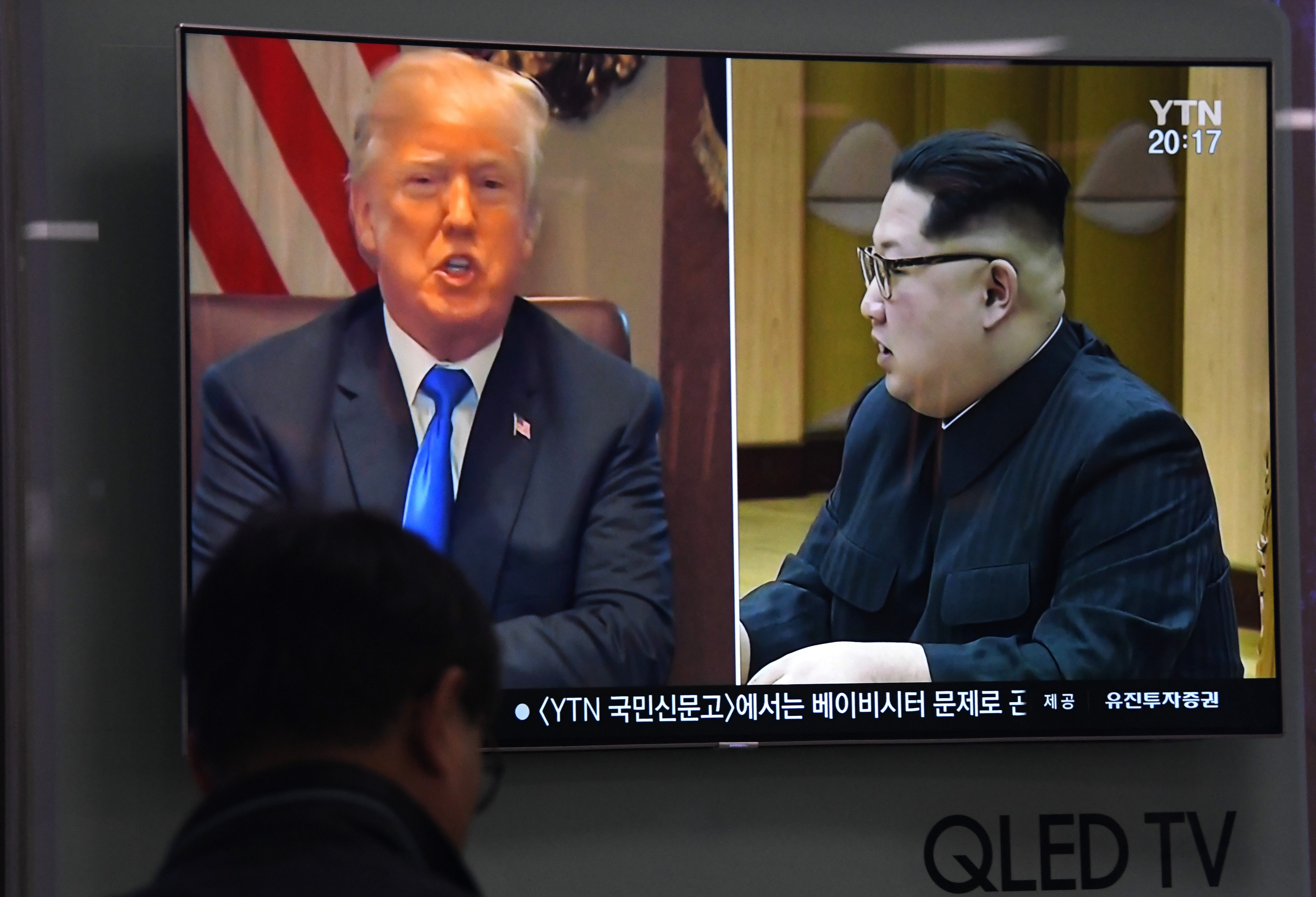Twists and turns of US-NKorean diplomatic rollercoaster
Photo: () | ©AFP
Washington (AFP) – Donald Trump’s decision to cancel a June 12 summit with North Korea’s Kim Jong Un is the latest dramatic twist in relations between two leaders who traded insults before laying the groundwork for what would have been a stunning rapprochement.
Here is a look back at the diplomatic rollercoaster that took Trump and Kim from rhetorical warfare to the verge of the unprecedented summit in Singapore — only for the hopes to be dashed in the final stretch.
– Trading insults –
On January 2, 2017, weeks before taking office, Trump vows North Korea will never be allowed to develop a nuclear weapon capable of reaching US territory.
But six months into Trump’s presidency, in July, Kim conducts two intercontinental ballistic missile tests, and declares the entire United States to be within North Korea’s range.
The following month, Trump threatens “fire and fury” if Pyongyang continues to threaten America, kicking off months of saber-rattling that set the world on edge.
Undeterred, Pyongyang weeks later test-fires a ballistic missile over Japan, and on September 3 carries out its sixth, “perfect” nuclear test, of a hydrogen bomb it claims can be mounted on a missile.
On September 21, 2017, Washington unveils a raft of tough sanctions to curb North Korea’s nuclear and ballistic missile program, two days after Trump’s maiden speech to the UN General Assembly, in which he dubs Kim a “Rocket Man” on a “suicide mission”.
In response, Kim brands Trump “mentally deranged” and a “dotard,” warning he will pay dearly for his threats.
As 2017 draws to a close, Kim boasts his missile arsenal can hit any city on the US mainland, warning in a New Year address that he has a “nuclear button” on his desk. Trump responds by saying his own nuclear button is “much bigger & more powerful.”
– ‘Peace Olympics’ –
Following years of tensions, South Korea’s hosting of the Winter Olympics in February 2018 gives the neighbors a window to reopen communications, ushering in a spectacular Korean detente.
As the two Koreas march together for the opening ceremony, the South’s President Moon Jae-in shares historic handshakes with Kim’s sister Kim Yo Jong, and Trump’s daughter Ivanka attends events with top officials from both sides.
Washington makes clear it will keep up the pressure despite signs of a regional thaw — slapping Pyongyang on February 23, 2018, with its largest ever set of sanctions, a move the regime calls an “act of war.”
But in a remarkable announcement at the White House, on March 8, a top South Korean official announces that Kim will “refrain from any further nuclear or missile tests” and has invited Trump to meet him — and that Trump has agreed.
The Olympics also pave the way for a historic inter-Korean summit, on April 27, which sees Pyongyang and Seoul promise to pursue the denuclearization of the peninsula and a permanent peace.
– Pompeo in Pyongyang –
Over the Easter weekend, Trump’s CIA chief and nominee for secretary of state Mike Pompeo travels secretly to Pyongyang where he meets Kim and begins to lay the groundwork for the landmark summit.
A month later, Pompeo makes a second unannounced trip aimed at finalizing the summit details — and pressing for the release of three US citizens detained by Pyongyang.
On May 9, Trump announces the three men are headed to the United States, personally welcoming them to Washington and offering effusive thanks to Kim.
The next morning, Trump reveals the date and location of his “highly-anticipated meeting” with Kim, vowing to “make it a very special moment for World Peace!”
As anticipation of the summit builds, talk grows of Trump as a contender for the Nobel Peace Prize — an idea that the US president himself entertains in a speech.
– The Unravelling –
But storm clouds start gathering on May 16 when North Korea threatens to cancel the summit as it expresses “repugnance” towards Trump’s National Security Advisor John Bolton.
Bolton provoked Pyongyang’s ire by suggesting it followed Libya’s lead on denuclearization — evoking memories of the demise of the late Moamer Kadhafi who was killed in a 2011 uprising after agreeing to scrap his nuclear program in 2003.
A further threat to cancel the summit comes on May 23 as North Korea calls US Vice President Mike Pence “stupid” after he warned Kim against trying “to play” Trump.
The next day, North Korea dismantles a nuclear test site in an apparent goodwill gesture. But only hours later, the White House releases the text of a letter from Trump to Kim saying his “open hostility” had scuppered the June 12 get-together.
Disclaimer: This story has not been edited by Siliconeer and is published from a syndicated feed. Siliconeer does not assume any liability for the above story. Validity of the above story is for 7 Days from original date of publishing. Content copyright AFP.


